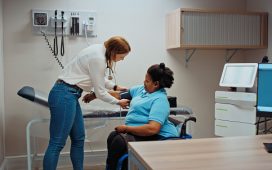Wearable technology is becoming increasingly common in healthcare. Wearable devices can be used to monitor patients’ vital signs, track their activity levels, and collect other data that can be used to improve care.
There are a number of benefits to using wearable technology for patient monitoring. First, wearable devices can provide continuous monitoring, which can help to identify changes in a patient’s condition early on. Second, wearable devices can be used to monitor patients remotely, which can free up nurses and doctors to focus on other tasks. Third, wearable devices can collect data that can be used to personalize treatment plans.
Here are some of the most promising wearable technologies for patient monitoring:
- Heart rate monitors: Heart rate monitors can be used to track a patient’s heart rate, which can be a sign of a number of conditions, such as heart arrhythmias and heart failure.
- Blood pressure monitors: Blood pressure monitors can be used to track a patient’s blood pressure, which can be a sign of a number of conditions, such as hypertension and heart disease.
- Activity trackers: Activity trackers can be used to track a patient’s activity levels, which can be used to assess their overall health and well-being.
- Sleep trackers: Sleep trackers can be used to track a patient’s sleep patterns, which can be used to identify sleep disorders and improve sleep quality.
Wearable technology is still in its early stages of development, but it has the potential to revolutionize patient monitoring. As the field continues to evolve, we can expect to see even more innovative wearable devices that can be used to improve patient care.








